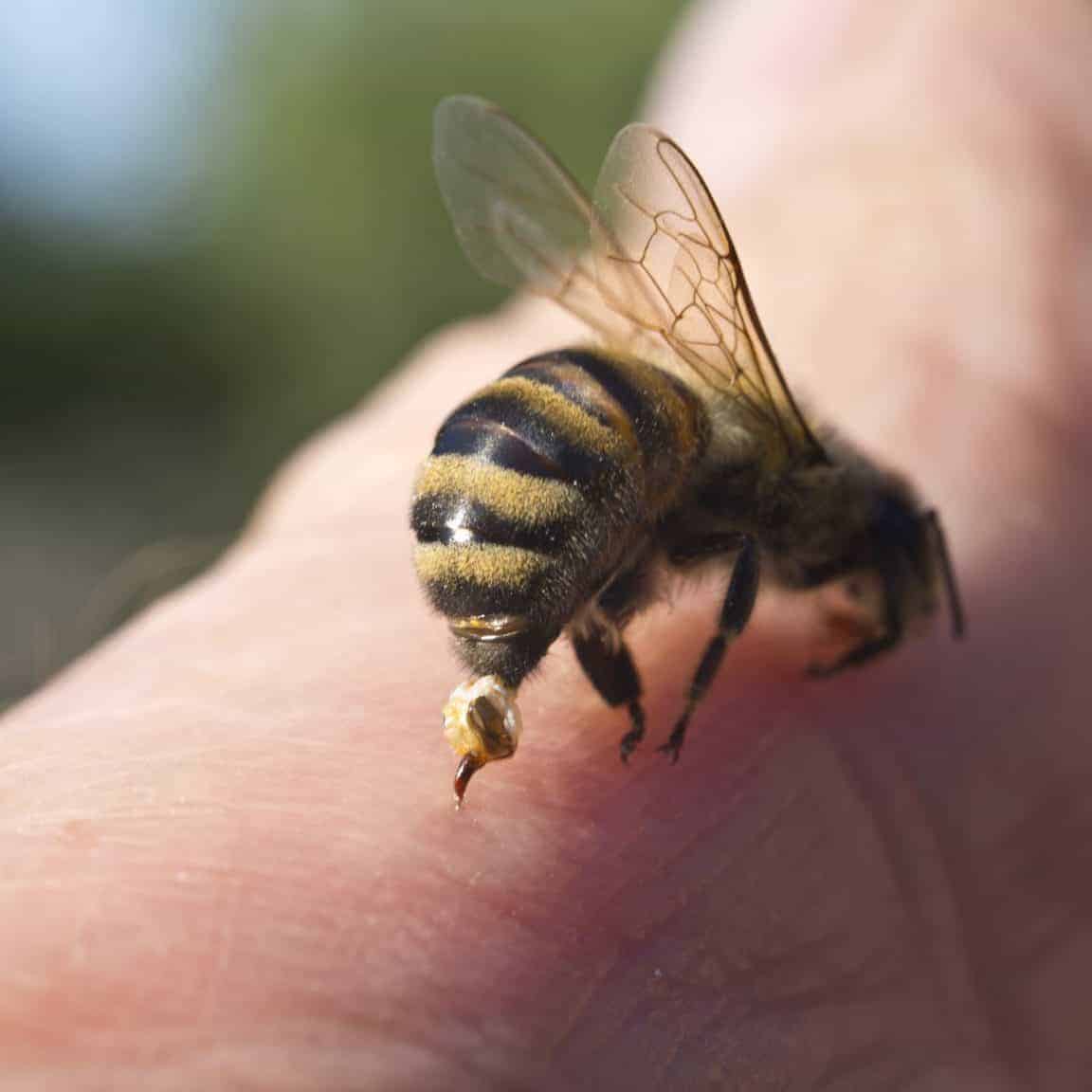Do bees attack? This is one of the most common questions asked by people who are considering taking up beekeeping, or who have recently purchased a beehive. The answer is, yes, bees can and do attack when they feel threatened. But don’t let that stop you from enjoying the many benefits of beekeeping, as there are ways to protect yourself and your hive from potential attacks. In this article, experienced beekeepers will share tips on how to keep your hive safe and your bees happy.
What Causes Honey Bees to Attack?
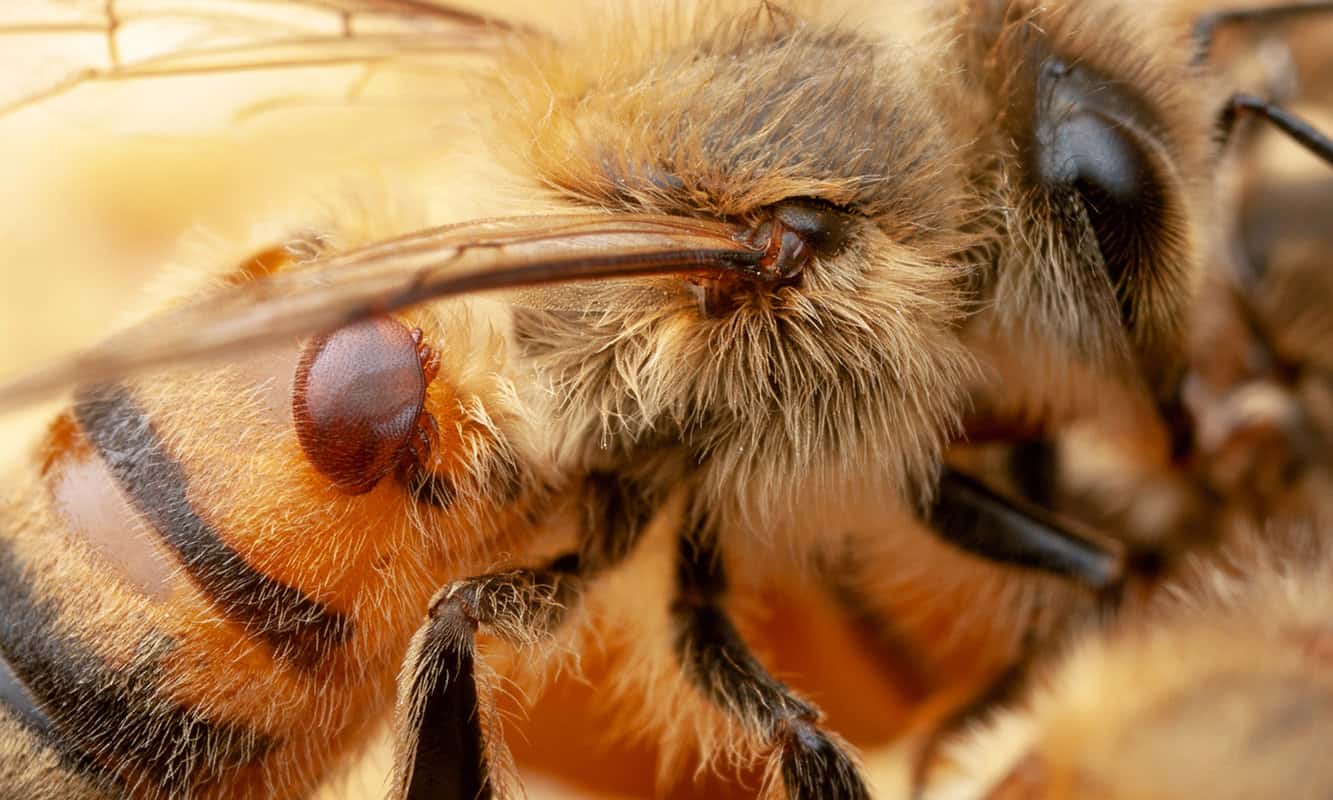
Honey bees usually become defensive and swarm when their hive is disturbed. This can happen when their hive is threatened, such as when an animal or person approaches too closely or when the hive is damaged. In some cases, honey bees will attack to defend their nectar and pollen stores. In addition, Africanized honey bees have been known to be highly aggressive and will attack with little provocation. Furthermore, beekeepers can unintentionally agitate a bee colony when checking for disease or pests, which can lead to an attack. Lastly, honey bee swarms are more likely to attack if they are looking for a new home or if they feel their current home is threatened.
What to Do When Honey Bees Attack
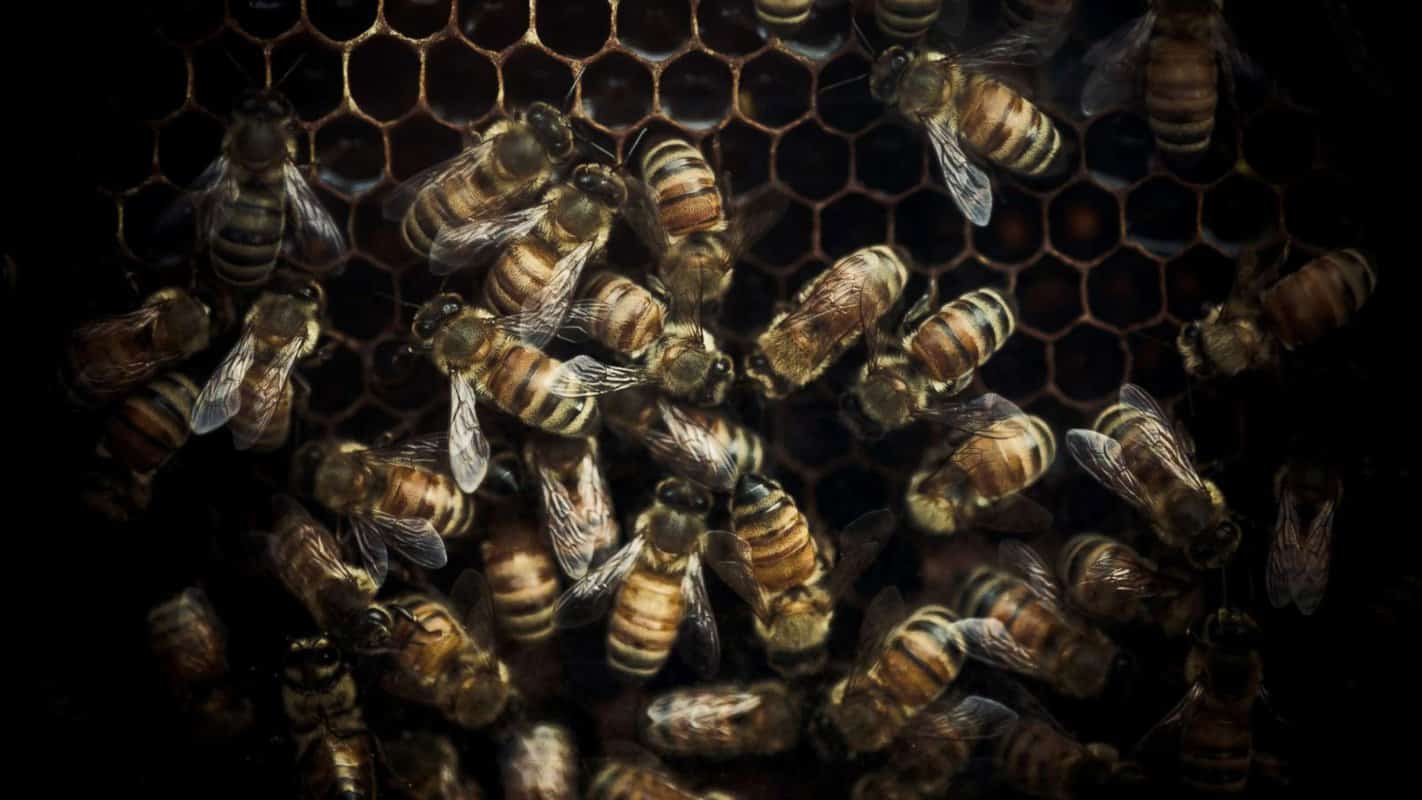
In the event of a honeybee attack, it is important to remain calm and move away from the area. Do not swat at the bees or attempt to cover them with clothing as this will only agitate them further. If indoors, close all windows and doors and do not open them until the bees are gone. If outdoors, move upwind and away from the bees and take shelter in a nearby building or vehicle.
Beekeepers should also take steps to protect their hives from attack. The hive should be kept away from areas of high activity or loud noises, as these can agitate the bees. The entrance to the hive should be reduced to a small opening, no more than 20 cm in diameter, to help discourage intruders.
In addition, beekeepers should regularly check for signs of pests and disease and take preventive measures against them. This includes removing any dead bees or debris from the hive, and treating the hive with an approved pesticide.
Finally, beekeepers should keep a close eye on the weather. If there is a sudden change in temperature or wind direction, this can cause the bees to become agitated and more likely to attack.
Avoid the Area
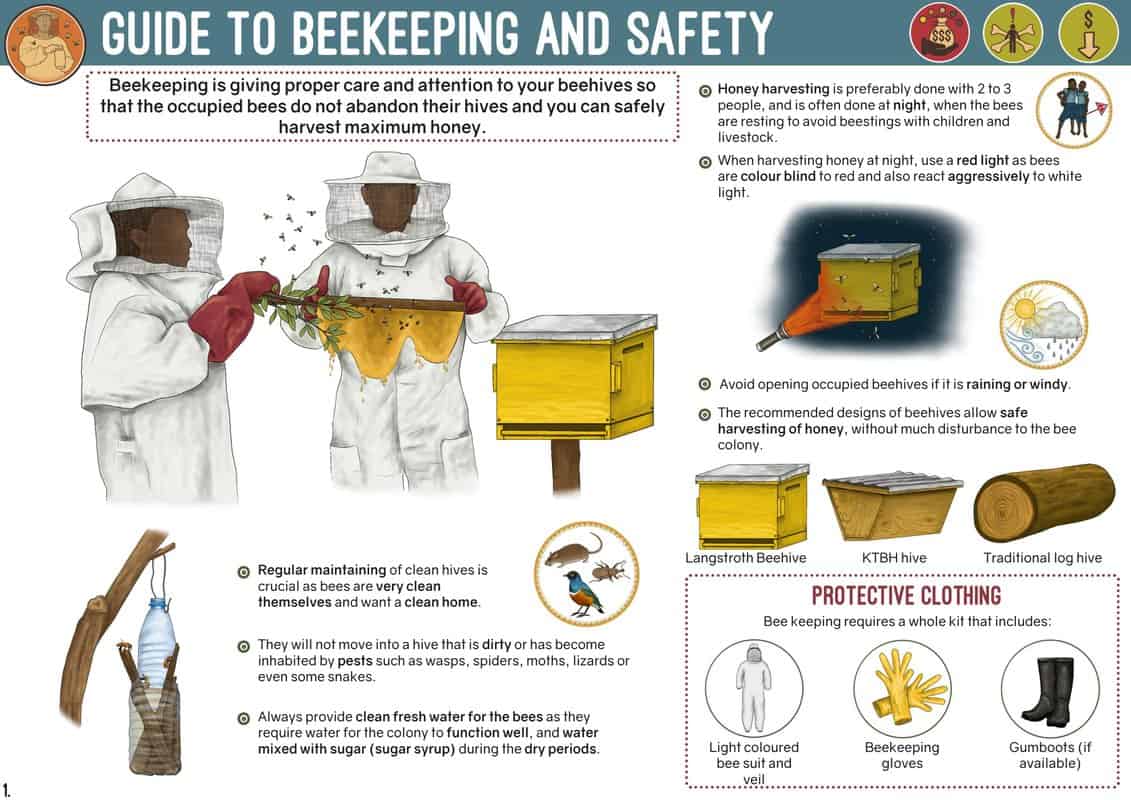
- Do not approach a bee hive. Bees can sense a person’s presence and will become defensive when they feel threatened.
- Do not disturb the hive. Even if the bees don’t become agitated, they can become agitated if their hive is disturbed.
- Do not try to swat the bees. Swatting the bees will only make them more aggressive and can cause them to sting.
- Do not use chemicals or sprays. Using chemicals or sprays can cause the bees to become even more aggressive and can make them more likely to attack.
- Keep away from the hive. If you see a bee hive, it is best to stay away from it and avoid the area.
Bees are generally not aggressive towards humans, however, if they feel threatened or their hive is disturbed, they may attack. To protect yourself and your hive, it is important to avoid the area around a bee hive and take extra precautions if you must be near them.
Remain Calm
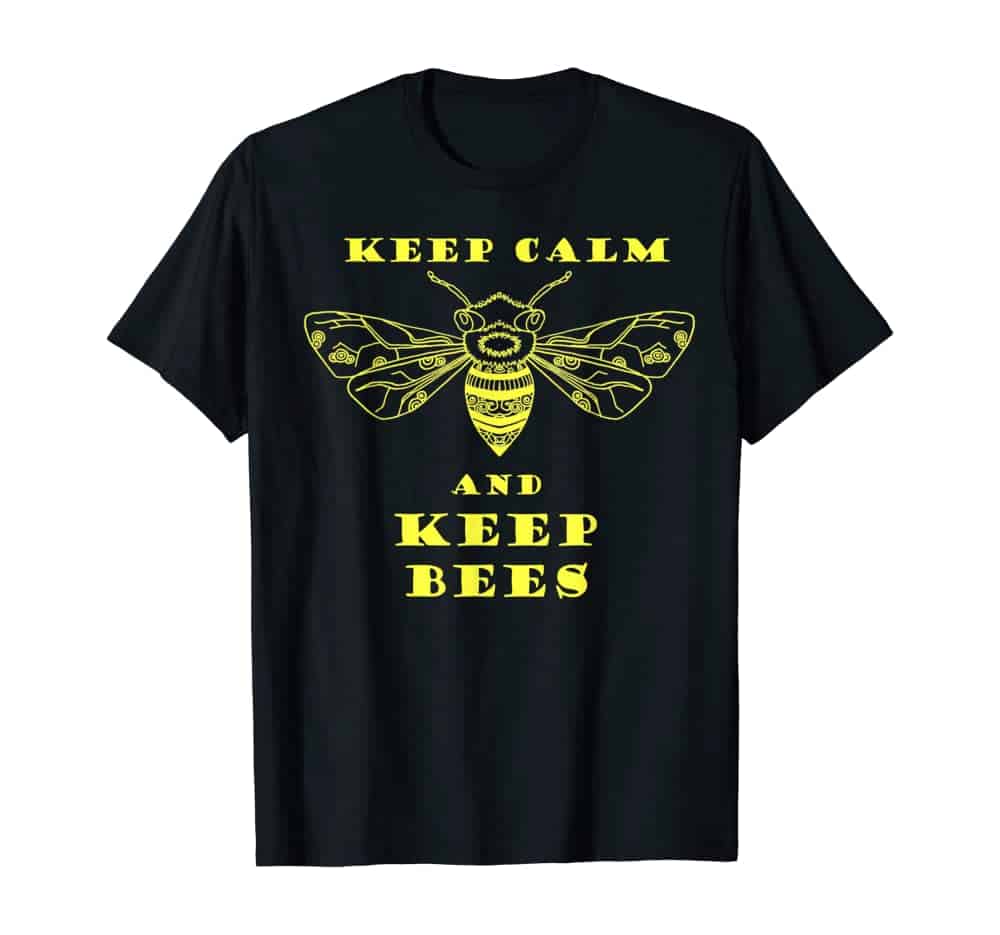
When faced with a potential bee attack, it is important to remember to remain calm. Do not panic, as this can make the situation worse. Instead, move away from the area slowly and keep an eye out for any further activity from the bees. If a bee does sting you, the best thing to do is to remove the stinger and wash the area with soap and water. It is also important to ensure that you are not wearing any scented perfumes, lotions, or hair products as these can attract bees. If you are a beekeeper and a hive is under attack, it is important to determine the cause of the attack. It is possible that the hive is being threatened by a predator or that the bees are defending their territory. If this is the case, you will need to take the appropriate steps to protect your hive and the bees will honey bees attack in it.
Leave the Area as Quickly as Possible
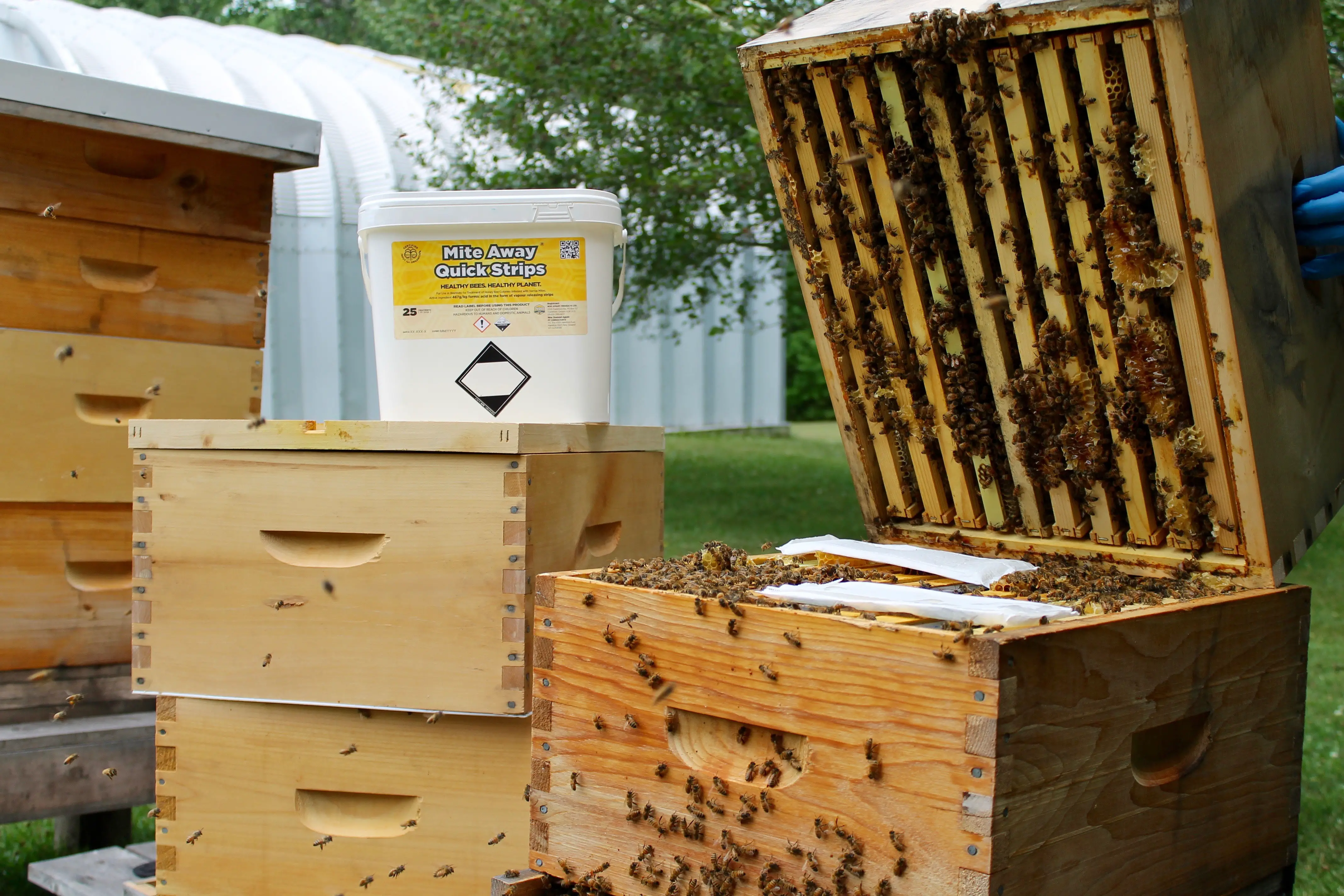
| Scenario | Action |
|---|---|
| You encounter a bee hive | Do not touch or disturb the hive. Move away from the area slowly and calmly. |
| You are stung by a bee | Remove the stinger as soon as possible. Move away from the area quickly. |
| Honey bees attack you | Leave the area as quickly as possible. Do not swat or run—bees are attracted to movement and may chase you. |
If you are stung multiple times, seek medical attention immediately.
Call for Professional Help
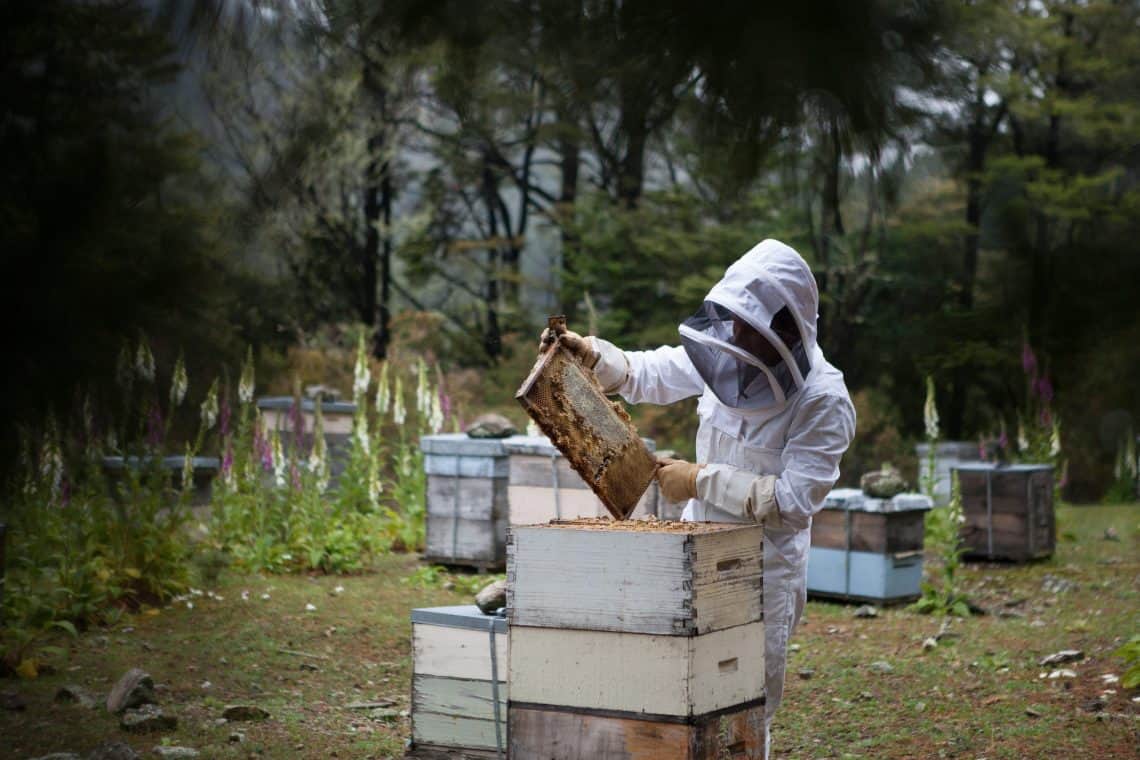
The best way to protect yourself, your family, and your honey bee hive from an attack is to enlist the services of a professional beekeeper. Professional beekeepers are trained to handle bee stings, as well as to safely remove bees from your property. They can also help you to identify the cause of the bee hive attack and provide advice on how to prevent future ones. In some cases, they may even be able to help you relocate the hive to a safer location. If you’re unsure of how to proceed, don’t hesitate to call for professional help.
How to Protect Yourself and Your Hive from Attack
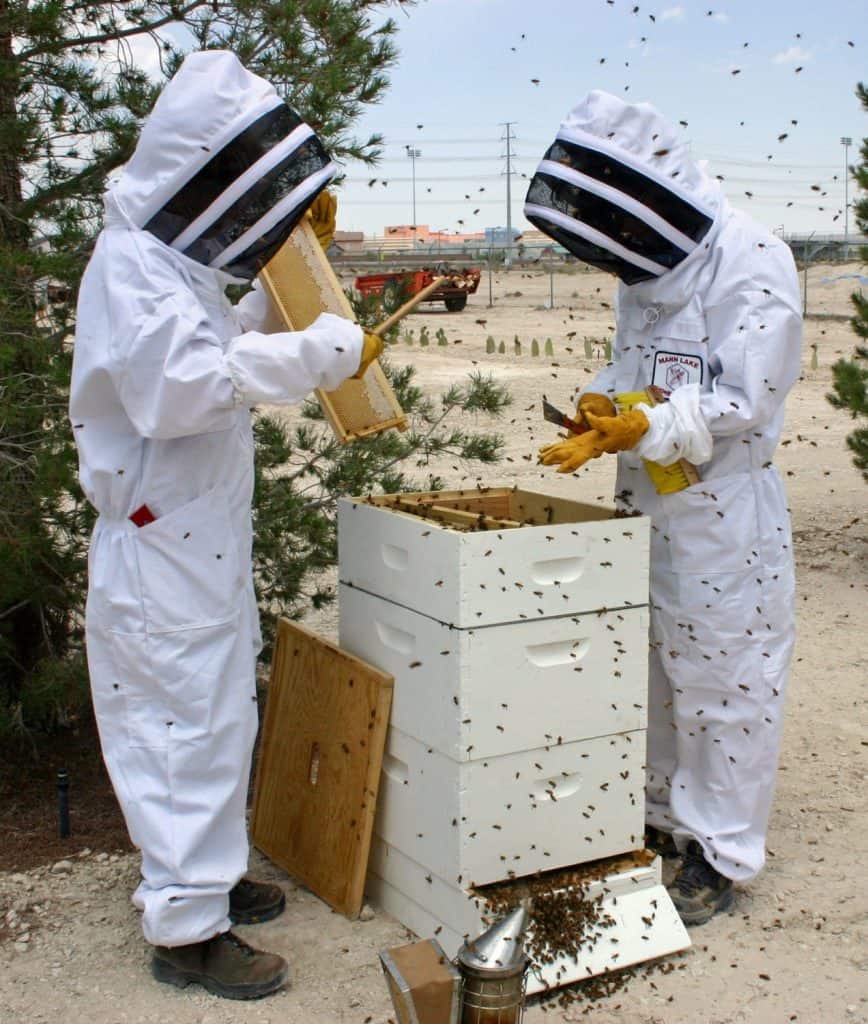
- Wear protective gear such as a veil, gloves, and long-sleeved clothing when tending your hive.
- Check the hive regularly to monitor for signs of aggression such as buzzing, chasing, and stinging.
- Be aware of bee-specific triggers such as loud noises and strong smells, which may cause bees to become agitated and attack.
- Keep hive entrances clear of debris, weeds, and grass, as these can block the hive and cause defensive behavior.
- Place hives away from frequently trafficked areas to reduce the risk of accidental disturbance.
- Never attempt to move or disturb a hive without proper protective gear.
- In the event of a honey bee attack, move away from the hive slowly, and seek medical attention if stung.
- Consider investing in a bee suit or other protective gear for more serious hive management activities.
Be Vigilant
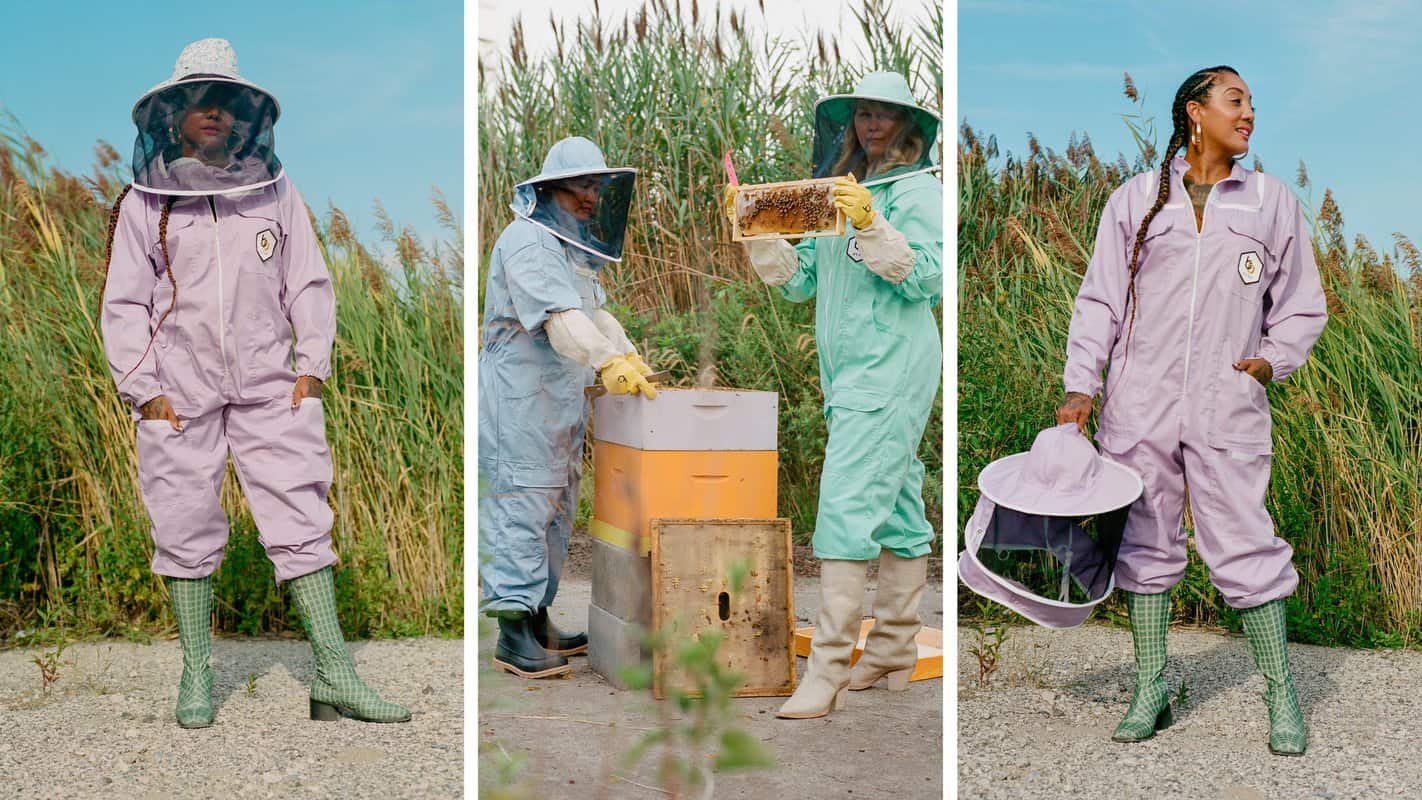
- Monitor the hive regularly. Look for signs of distress such as erratic flying and buzzing, abnormal sounds, and aggressive behavior. Don’t forget to check the area around the hive for signs of disturbance.
- Keep the hive clean. Remove any debris or dead bees around the hive as this can attract other insects and pests which can trigger a defensive response from the bees.
- Be aware of what you wear when working around the hive. Avoid wearing bright colors or floral patterns, as these can provoke an attack. Wear protective clothing such as a beekeeper’s veil, gloves, and long sleeves.
- Be aware of your surroundings. If you’re in an area where there are a lot of bees, keep an eye out for signs of a hive or swarm. If you do see one, be sure to keep your distance and alert local beekeepers.
- Know what to do if attacked. If you are attacked, remain calm and move away from the hive. Cover your face and head with your hands and run to a safe area. Do not swat or hit the bees as this can aggravate them further.
The best way to protect yourself and your hive from a bee attack is to be vigilant. Pay attention to the environment around the hive and be aware of any changes or disturbances. Monitor the hive regularly and keep it clean, and know what to do if you do find yourself in a situation where bees are attacking.
Take Extra Care Around the Entrances
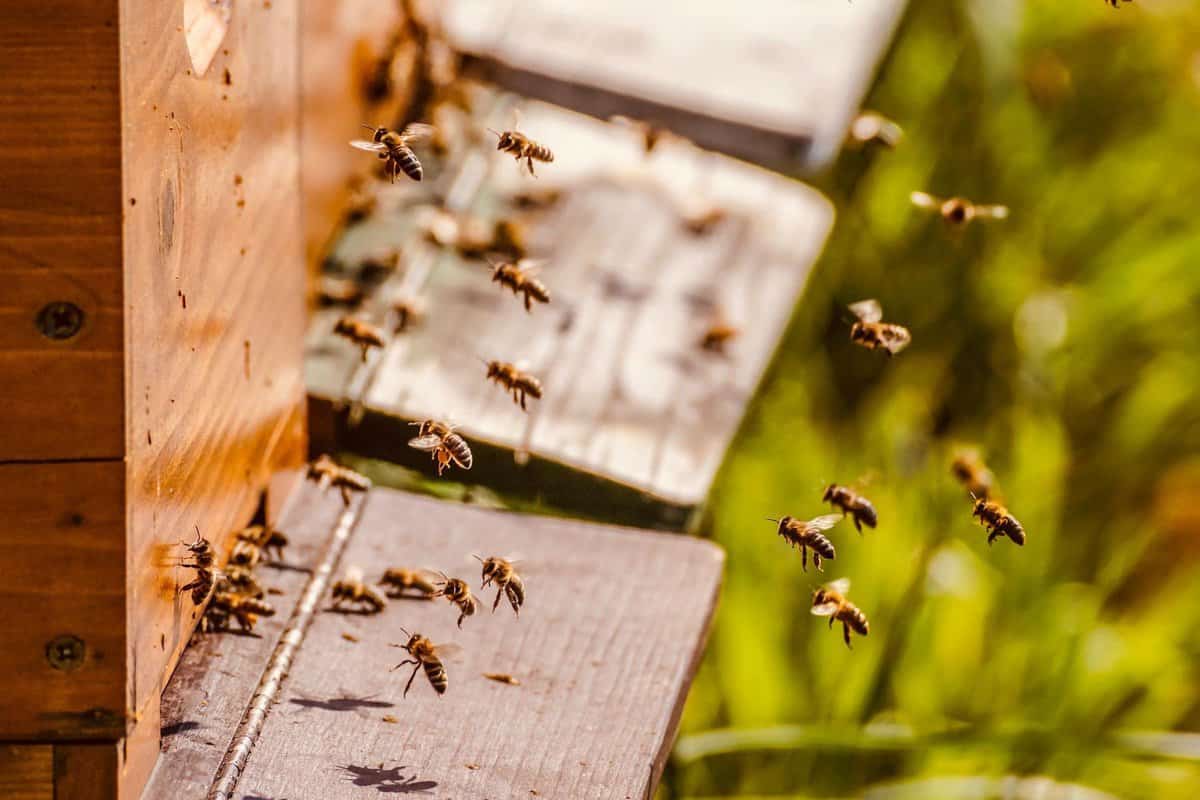
Do bees attack? Yes, bees can attack if they feel threatened or perceive a danger to their hive or colony. Beekeepers must take extra care around the entrances of their beehives, as it is the most likely place for a bee attack.
- Always wear protective clothing when entering a beehive.
- Never approach a beehive too quickly or aggressively.
- Keep a safe distance from the entrance.
- Be aware of any changes in the hive’s activity that could indicate an increased risk of attack.
- Check the beehive frequently for signs of aggression.
- Immediately address any signs of aggression with the appropriate response.
It is important to remember that bees are generally harmless and will only attack if they feel threatened. However, it is still important to take extra care around the entrances of beehives. By following the above steps, beekeepers can ensure that they are prepared in the event of an attack and can protect themselves and their hives from any potential danger.
Clean and Disinfect Your Equipment
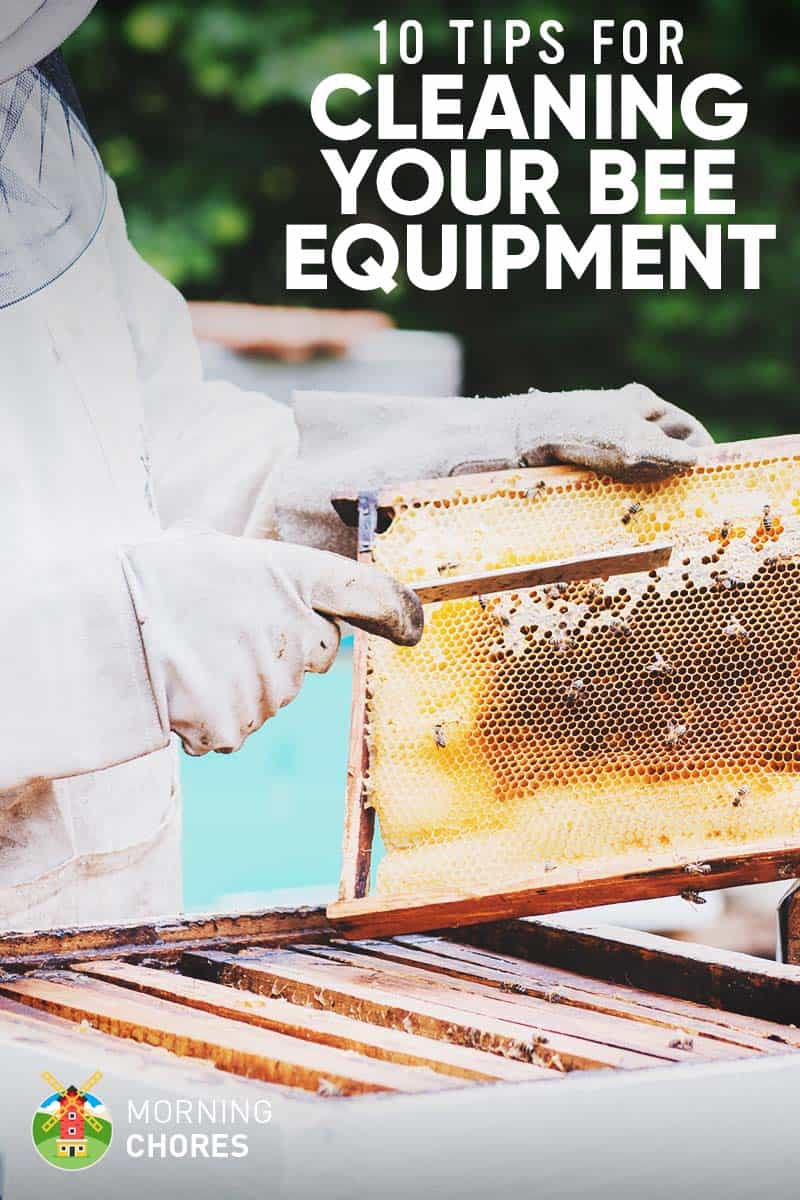
It is essential to clean and disinfect your beekeeping equipment after every use, especially after a honey bee attack. This will help to prevent the spread of diseases and parasites to your hives. Cleaning should be done with a solution of soapy water and bleach, and all equipment should be thoroughly dried before being put away. Additionally, any hive that has been in contact with a bee hive attack should be disinfected before it is used again.
Also, you should wear protective clothing when dealing with honey bee colonies. This includes gloves, a beekeeper’s hat, and a veil. If you are stung, avoid scratching the sting site and use a cold compress to reduce inflammation. If you experience any allergic reactions, seek medical attention immediately.
Lastly, it is important to keep your beekeeping tools and equipment in a secure area, away from animals and humans. This will help to prevent a honey bee attack and further protect yourself, your hives, and your bees.
Check for Infestations
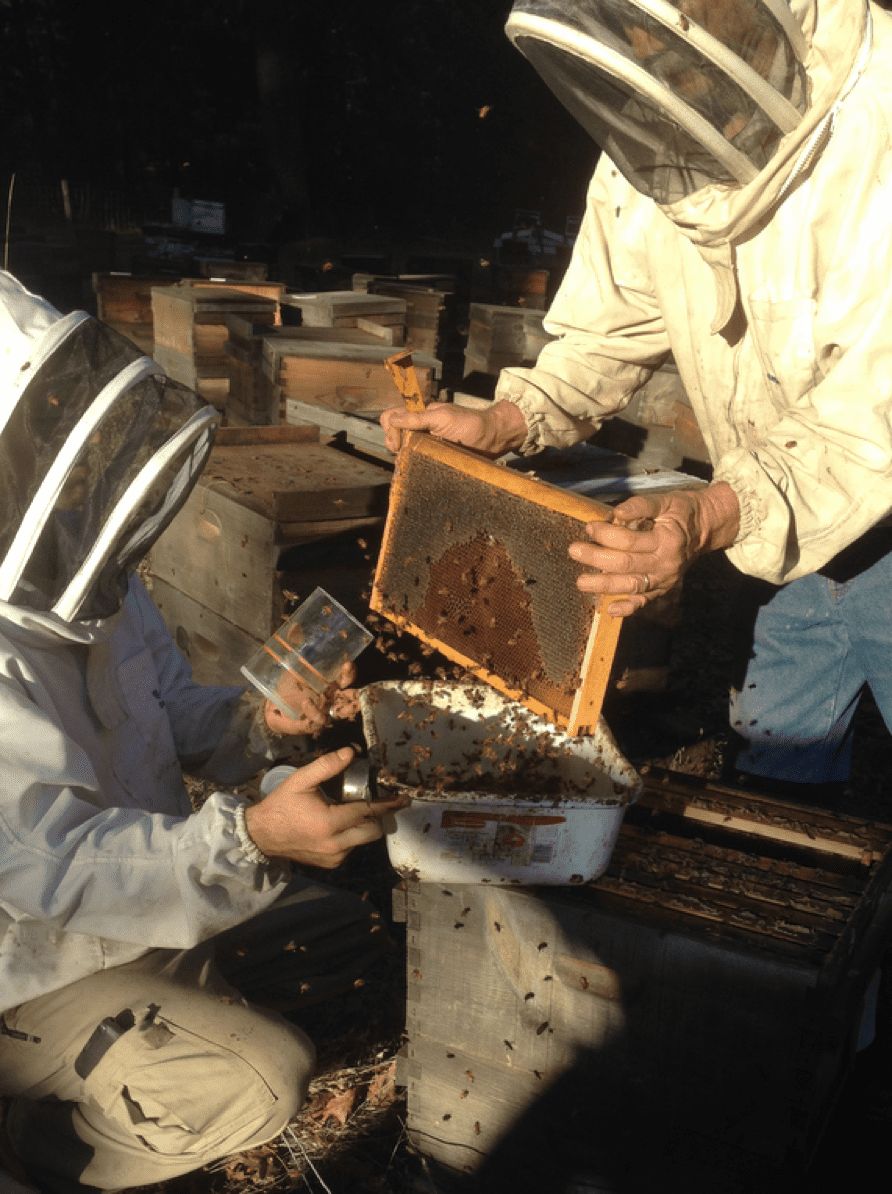
- Inspect your hives frequently for any signs of infestation. Look for spots of discolored wax, traces of mildew, or areas of dead bees.
- Check for pests such as mites, wax moths, or beetles. These pests can cause considerable damage to a hive and should be dealt with quickly.
- Regularly clean the hive to remove debris and dead bees. This will help minimize the chances of an infestation.
- Use traps to detect and remove pests. Traps can be placed in the hive or around the hive to help catch and remove potential pests.
It is important to keep an eye out for any signs of infestation, as these can lead to a bee attack. If you notice any signs of an infestation, it is important to take action quickly to protect your hive and your bees.
Check for Signs of Disease
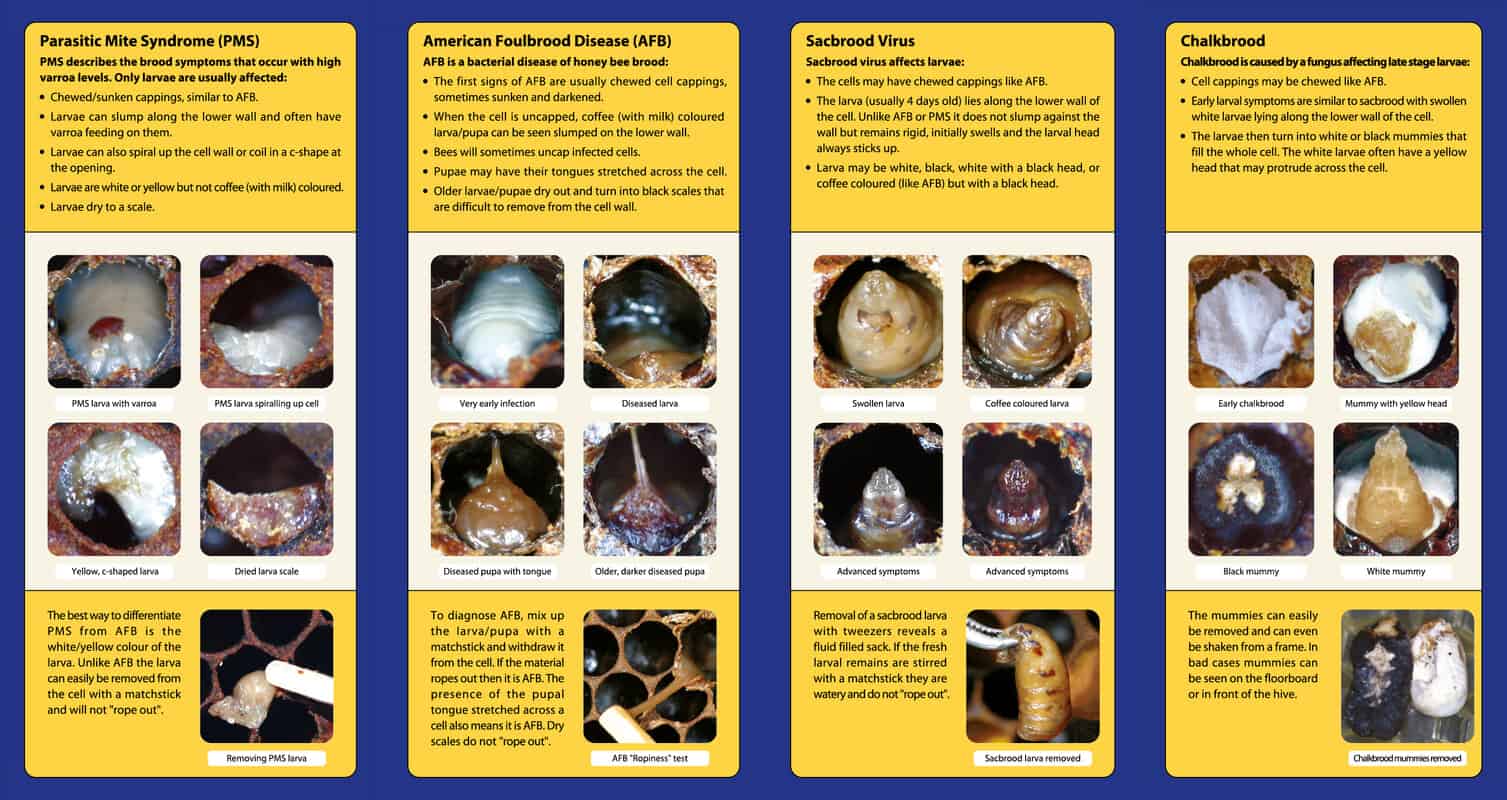
- Look for signs of infection: Infection can weaken the hive, making the bees more aggressive. Check for signs of mites, wax moths, and other pests that can cause infection.
- Check for queen issues: Queen bees are essential for a healthy hive, and if she is weak or not present, it can cause a hive to become unstable and potentially aggressive.
- Check for signs of starvation: If the hive is not receiving enough food, it can become stressed and more likely to attack.
Beekeepers should regularly inspect their hives for signs of disease to ensure the bees remain healthy and less likely to become aggressive. If any signs of disease are detected, it is important to take action immediately to prevent the spread of infection and protect the hive.
Inspect the Hive Regularly
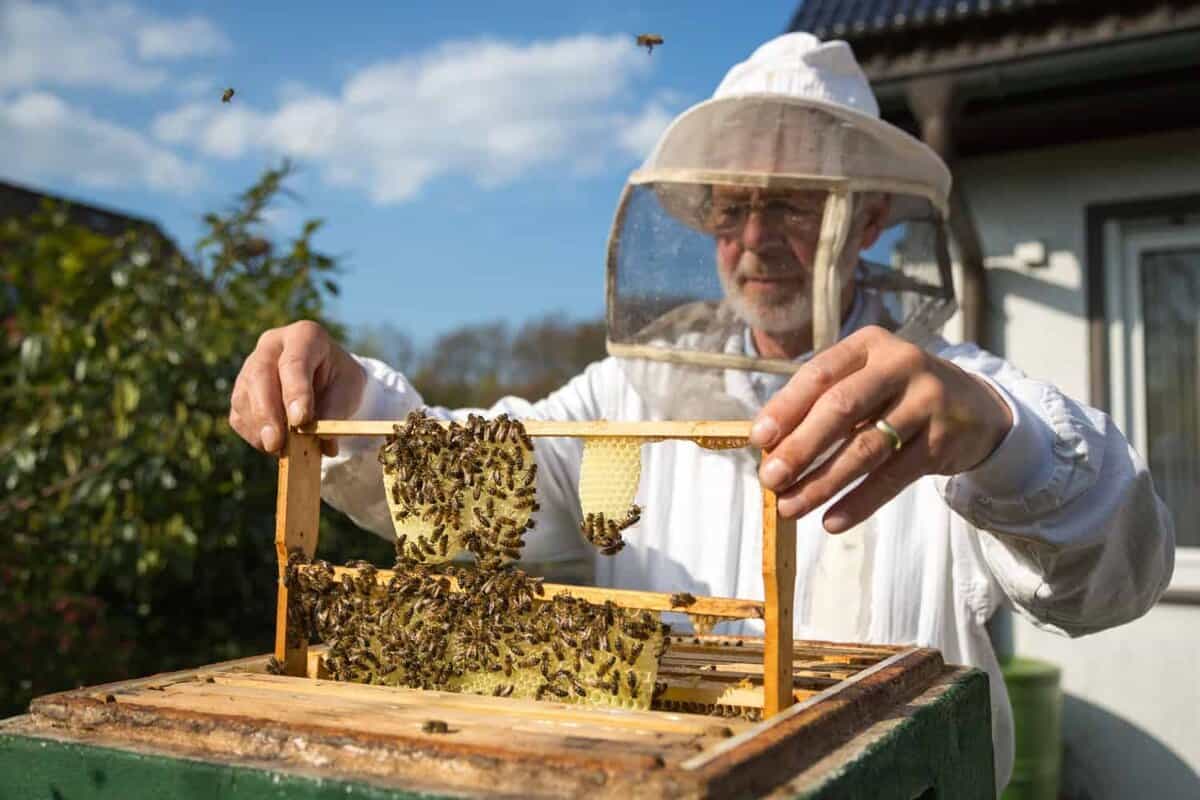
It is important to inspect the hive regularly to assess the health and growth of the colony. This will help to identify any problems in the hive, such as disease or pests, which can cause the bees to become agitated and more likely to attack. Also, if you notice that the hive is overcrowded, you can consider rehoming some of the bees or creating a second hive to reduce the stress on the colony. Doing regular hive inspections will also allow you to ensure that the hive is adequately ventilated and protected from predators. Additionally, you can check for any signs of bee swarming, which is when a group of bees leave the hive in search of a new home. Swarming can be a sign that the colony is overcrowded and in need of more space, or that there are too few resources available to sustain the colony.
Will Honey Bees Attack Humans?
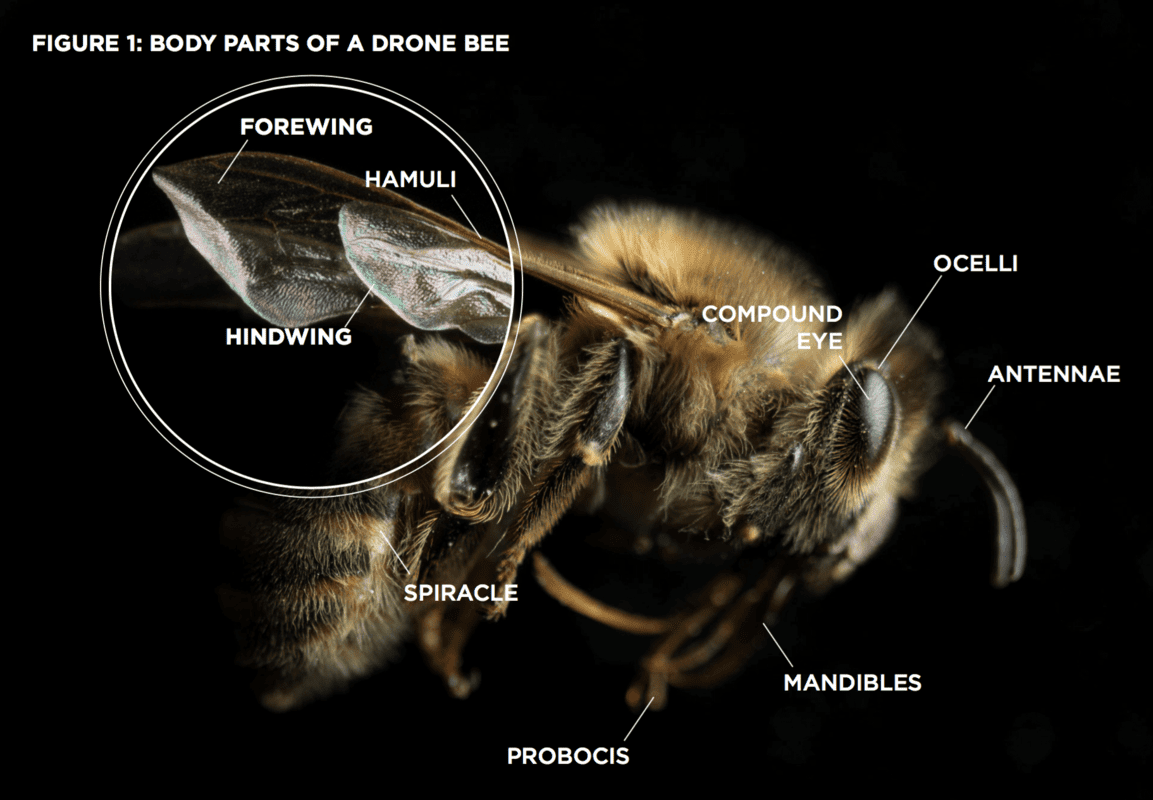
Honey bees generally don’t attack unless they feel threatened. They won’t sting unless provoked, and they don’t respond to an aggressive stance or loud noises. However, if a bee feels its hive is in danger, it will react with a sting. If a beekeeper or gardener unknowingly puts themselves in the middle of a hive, the bees may swarm and sting in order to protect their home.
What To Do When Bees Attack
If a honey bee attacks, remain calm. The goal is to get away from the area as quickly as possible. Don’t swat at the bee or try to kill it; this will only cause the bee to become more aggressive. If a bee is buzzing around, cover your face and move away slowly. If you are attacked, seek medical attention immediately.
Do Bees Attack?
No, bees will not attack unless provoked. They may become defensive if their hive is disturbed or threatened, but they are not aggressive. Beekeepers should always wear protective gear when working with hives to reduce the risk of being attacked.
| Honeybee Attack | What To Do |
|---|---|
| Do Bees Attack Humans? | No, bees will not attack humans unless provoked. |
| Why Do Bees Attack Me? | Bees may become defensive if they feel their hive is threatened. Move away slowly and cover your face if a bee is buzzing around. |
| Do Bees Attack Other Animals? | Yes, bees may attack other animals if they feel their hive is threatened. |
| Can A Bee Hive Attack? | Yes, if a beekeeper or gardener unknowingly puts themselves in the middle of a hive, the bees may swarm and sting in order to protect their home. |
| Why Do Bees Attack Humans? | Bees may attack humans if they feel their hive is threatened or if they are provoked. |
It’s important to remember that bees are very important for our environment and for food production. They are not aggressive and should not be feared. Taking the proper precautions when working with hives can help reduce the risk of a bee attack.
Factors that Increase the Risk of an Attack
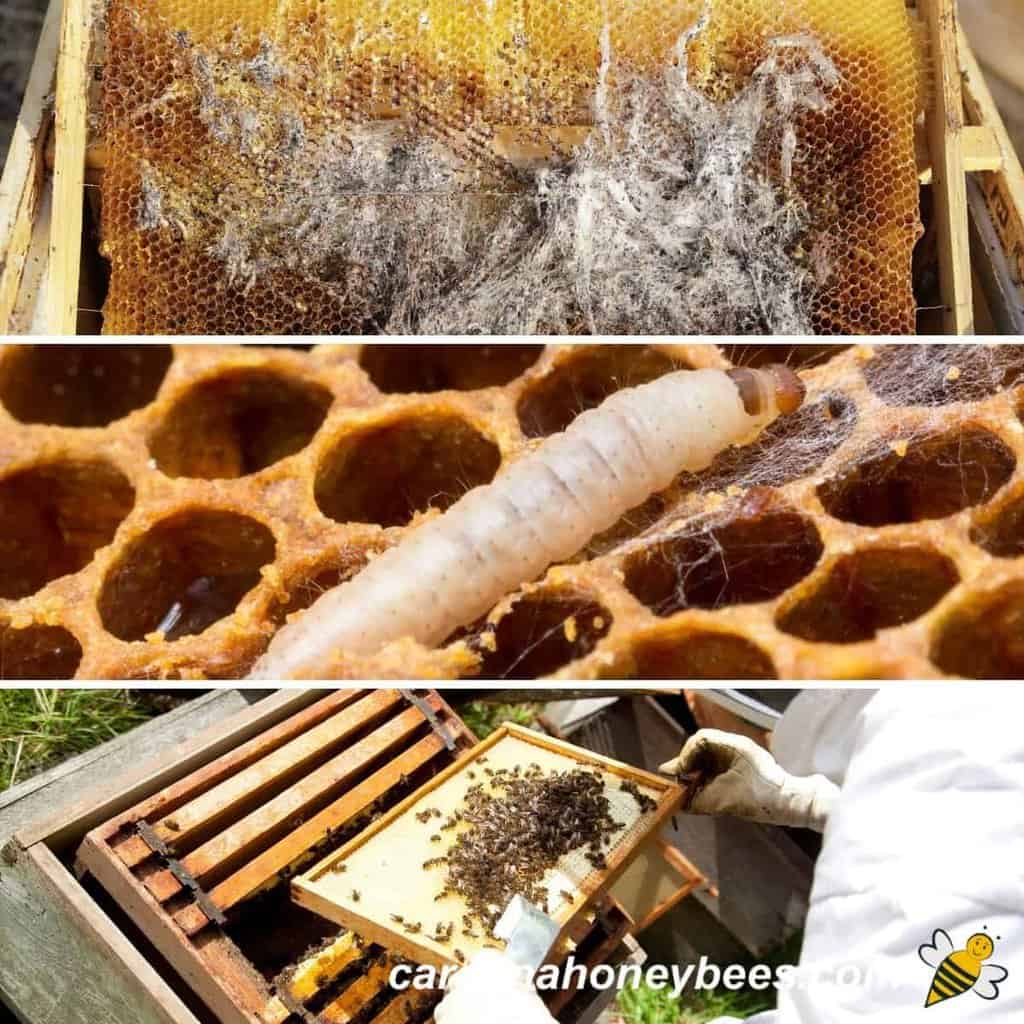
Unfamiliarity – Bees are territorial and may become agitated if they perceive an unfamiliar presence. To reduce the risk of an attack, beekeepers should be aware of their surroundings and be mindful of their movements when in the vicinity of a hive.
Disturbing the hive – Bees are more likely to attack if the hive is disturbed or threatened. It is important for beekeepers to be mindful of activities that may trigger an attack, such as removing honeycombs or attempting to capture a bee.
Weather – Hot weather can make bees more aggressive, and strong winds can cause them to become agitated. To reduce the risk of an attack, beekeepers should pay attention to the weather and take extra care when handling hives in extreme conditions.
Pesticides – Pesticides can disrupt the natural balance of a hive and may cause bees to become aggressive. To protect the hive and reduce the risk of attack, beekeepers should be mindful of their use of pesticides.
Lack of food – Bees are more likely to attack if they do not have access to adequate food sources. To reduce the risk of an attack, beekeepers should ensure their hives are well-stocked with pollen and nectar.
How to Avoid Being Attacked
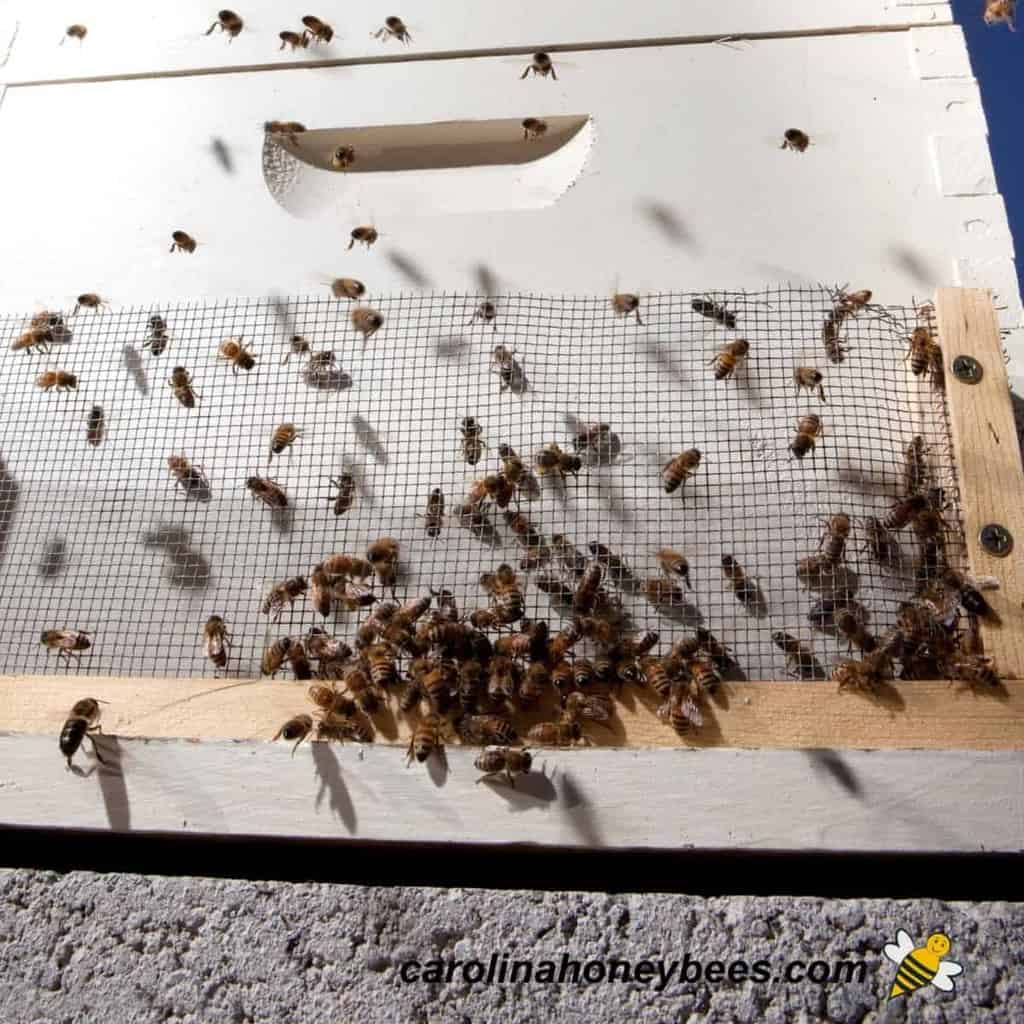
When faced with an aggressive bee, the most important thing is to remain calm and still. Move slowly away from the area, and do not swat at the bee or make any sudden movements. If the bee follows, run in a zig-zag pattern or behind some kind of shelter. Do not jump into water, as the bee may wait until you resurface. Wear protective clothing, like long-sleeved shirts and pants, when working with bees. Additionally, avoid wearing brightly colored clothing or perfumes as they may attract bees.
If you are stung, remove the stinger as soon as possible by scraping it off with a fingernail. Do not grab the stinger with tweezers or pinch it off with your fingers as this can inject more venom into the skin. If you are allergic to bee stings, carry an EpiPen to administer epinephrine and seek medical attention immediately.
Lastly, keep hives and nests away from high-traffic areas, and use a screened-in hive to prevent direct contact with bees. If you do come into contact with a bee hive, leave the area immediately and seek help from a beekeeper or a pest control expert.
Why Do Bees Attack Me?
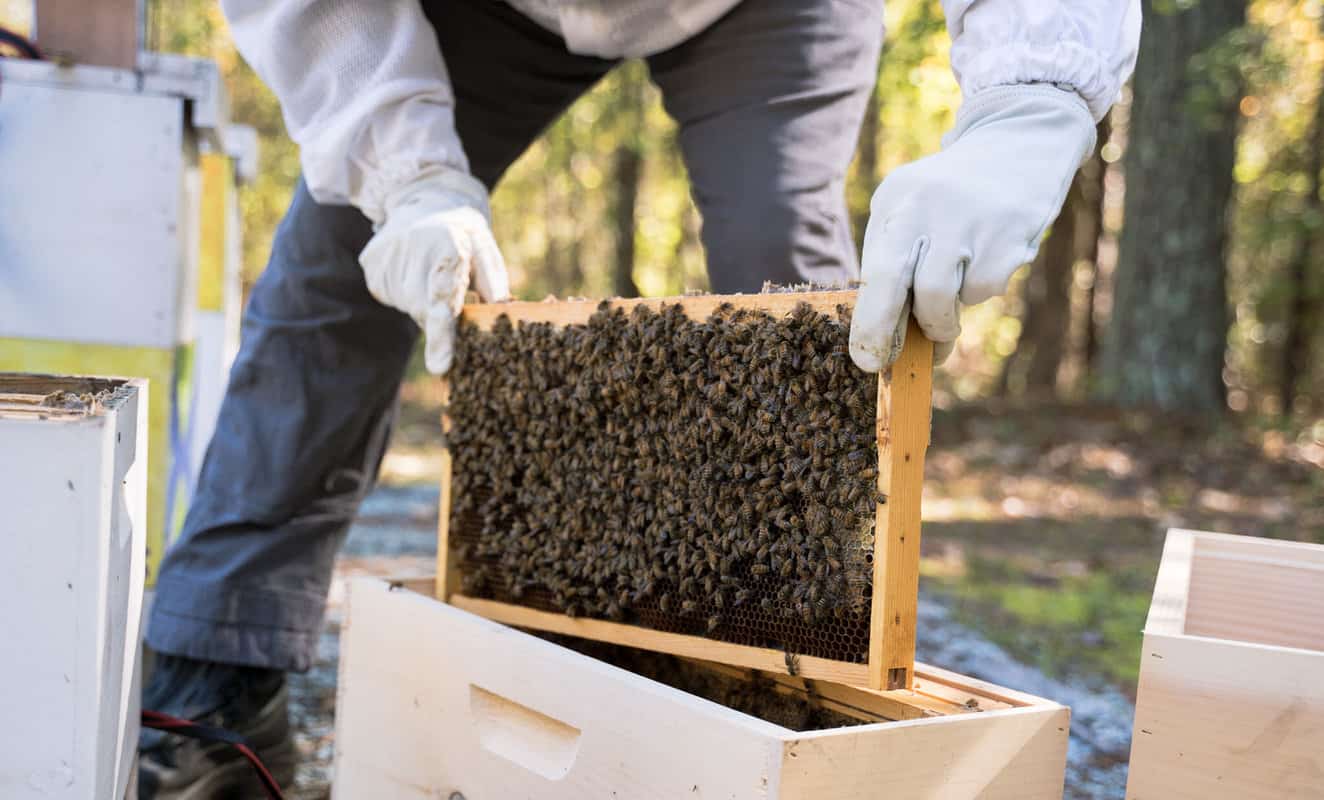
Bees will attack when they feel threatened. They may also attack if their hive has been disturbed or if their environment has been impacted negatively. When bees become agitated, they will release a pheromone known as an alarm substance which can cause other bees to become defensive and attack.
Common triggers for bee attacks include:
- Getting too close to the hive or to a bee nest.
- Trying to swat at the bees.
- Wearing bright colors or scented perfumes.
- Making loud noises or vibrations near the hive.
Bees may also be more likely to attack humans if they are infected with a parasite, such as the Varroa mite, or if they are suffering from a lack of food. A beekeeper may also be more likely to be attacked if they do not take proper precautions when working with their bees.
It is important to remember that bees are generally docile and will only attack when provoked. If you find yourself in a situation where you believe you may be attacked by bees, it is important to remain calm and to move away from the hive or nest as quickly as possible.
Possible Causes
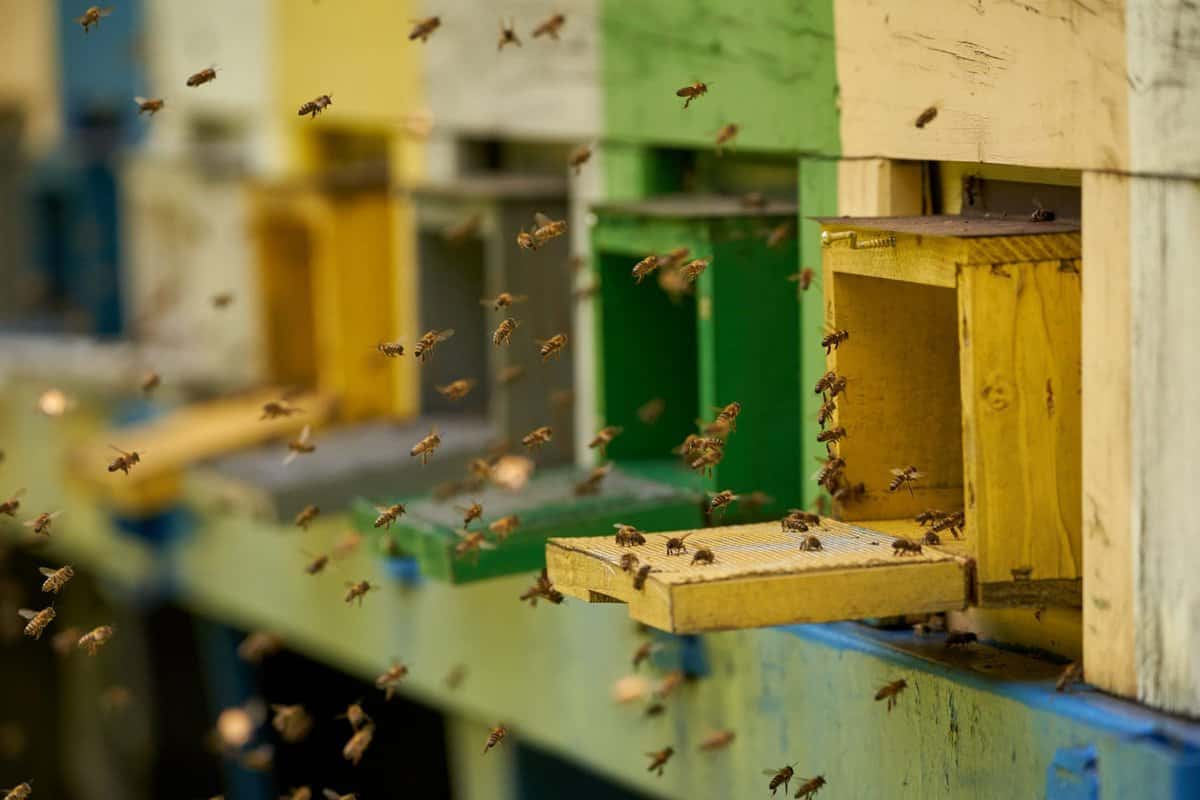
Bee attacks are usually caused by humans or animals disturbing the hive or getting too close. Bees may also become aggressive when defending their hive from predators, such as skunks, raccoons, bears, or other animals. In some cases, a bee colony may become agitated when a change in the environment affects their food supply or nesting area. In rare cases, some bee species may also become aggressive when they sense a threat to their hive, such as a change in temperature, humidity, or air quality.
How to Avoid Being Attacked

Know Your Bees: Honey bees aren’t typically aggressive, but they will defend their hive if they feel threatened. Knowing the type of bee you have and their behavior can help you avoid an attack.
Stay Calm: If you are near a hive, remain calm and move slowly away. Don’t swat or flail at the bees as this will make them more aggressive.
Wear Protective Clothing: Wear long sleeves and pants, as well as a hat and veil when working with bees. This will protect you from stings.
Keep Away: Stay away from a beehive if you don’t need to be near it. If you are near a hive, make sure to keep your distance and avoid making sudden movements.
Don’t Smoke: Smoke can agitate bees and make them more likely to attack. If you must smoke, make sure to do it away from the hive.
Don’t Wear Perfumes: Avoid wearing perfumes, colognes, and other scented products when working with bees.
Be Prepared: Always keep an escape route in mind, and have a beekeeper or bee removal expert on call in case of an attack.
Stay Away from Nests: Avoid disturbing a bee nest if you can. If you must get near one, make sure to wear protective clothing and keep your distance.
Frequently Asked Questions
Are Bees More Likely to Attack When They Are Threatened?
Yes, bees are more likely to attack when they feel threatened. Beekeepers should avoid disturbing the hive, and take extra caution when working around their hive. If a bee is disturbed, it may become aggressive and sting. When a bee stings, it releases a pheromone which can alert other bees to attack. To protect oneself from being attacked, beekeepers should wear protective clothing and use tools that limit contact with the bees. Additionally, beekeepers should be aware of the hive’s environment and use methods to reduce stress on the bees, such as providing adequate food and water.
How can I tell if a bee is getting ready to attack?
Bees usually give a warning before attacking. Signs of aggression include rapidly flapping wings, loud buzzing, and a dive-bombing motion. If you see a bee exhibiting any of these behaviors, it’s best to move away quickly. If you are near a hive, it’s important to observe the bee’s behavior and take appropriate precautions. If a bee is displaying any signs of aggression, it’s best to back away slowly and avoid sudden movements.
What Can I Do if I am Attacked by a Bee?
If you are attacked by a bee, the best course of action is to try to remain calm and move away from the area. If the bee continues to pursue you, running away or covering your head with clothing can help to reduce the severity of a sting. If you are stung, immediately remove the stinger and wash the area with soap and water. Applying a cold compress or topical antihistamine can help reduce swelling and pain. Seek medical attention if the reaction is severe.
What Should I Do if I Find a Bee Hive in My Backyard?
- 1. Remain Calm – The first thing you should do is remain calm and don’t panic. Bees are generally not aggressive and will only sting when they feel threatened by you or their hive.
2. Call a Professional Beekeeper – If you find a bee hive in your backyard, it’s best to call a professional beekeeper to help you safely remove it. A beekeeper can safely remove the hive and the bees, preventing them from returning.
3. Don’t Disturb the Hive – Never disturb the hive or try to remove it yourself. Doing so could agitate the bees and cause them to attack you.
4. Close Off the Area – To prevent people from entering the area, close off the area around the hive by placing a fence or barrier around it.
5. Monitor the Hive – Once the hive is removed, keep an eye on the area to make sure the bees don’t return.
6. Consider Relocating the Hive – If you want the bees to stay, you may want to consider relocating the hive to a safer area. A beekeeper can help you with this.
Are there any natural ways to protect my bee hive from predators?
Placing the hive in an ideal spot: The first step in protecting a bee hive from predators is to place it in a location that is safe and secure. It should be away from trees and other structures that predators may use as a hiding place. It should also be away from sources of water and food that may attract predators.
Using predator guards: Predator guards can be placed around the hive to prevent predators from accessing the entrance. These guards can be made from wire mesh and should be at least two feet tall.
Using traps: Traps can be set around the hive to catch predators. Traps can be baited with food and the bait should be changed regularly to prevent the predators from becoming accustomed to it.
Using deterrents: Deterrents such as sprays and devices that emit sound or light can be used to keep predators away from the hive. These devices should be placed around the hive in a way that will not disturb the bees.
Using guards: Beekeepers can also use guards to protect the hive from predators. These guards can be trained dogs or humans who will patrol the area and discourage predators from approaching the hive.
Conclusion
Bee attacks are rare, but it is important to be aware of the actions that can provoke them and to have the proper protective gear in case of an attack. Beekeepers should also ensure that their bee hives are kept clean, well ventilated, and away from potential predators. Following these tips can help keep beekeepers safe, and their hives healthy and productive.
